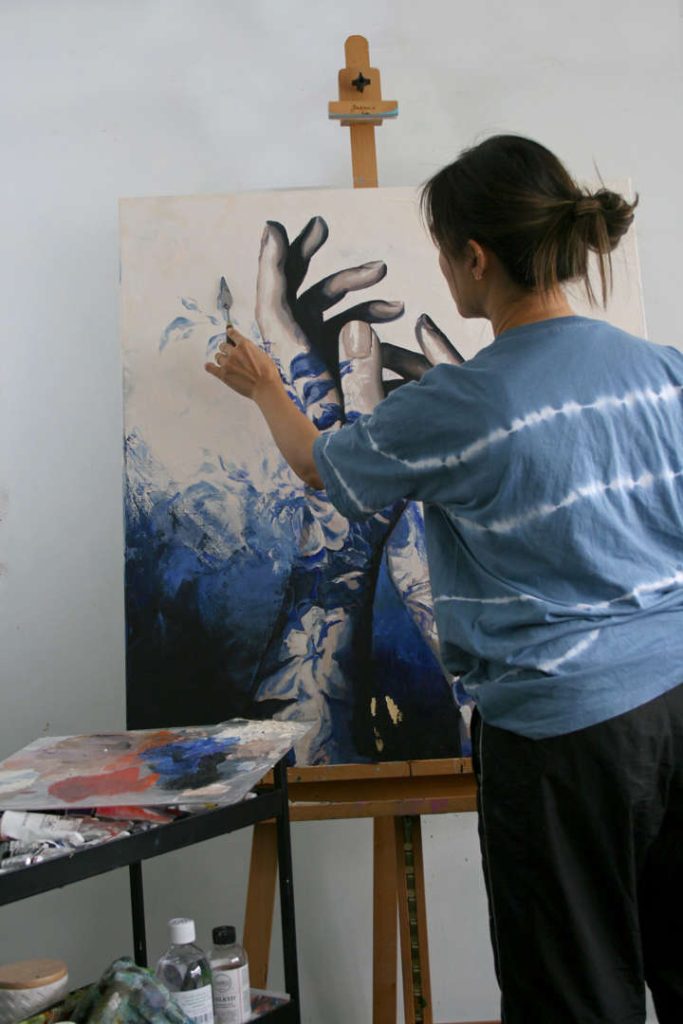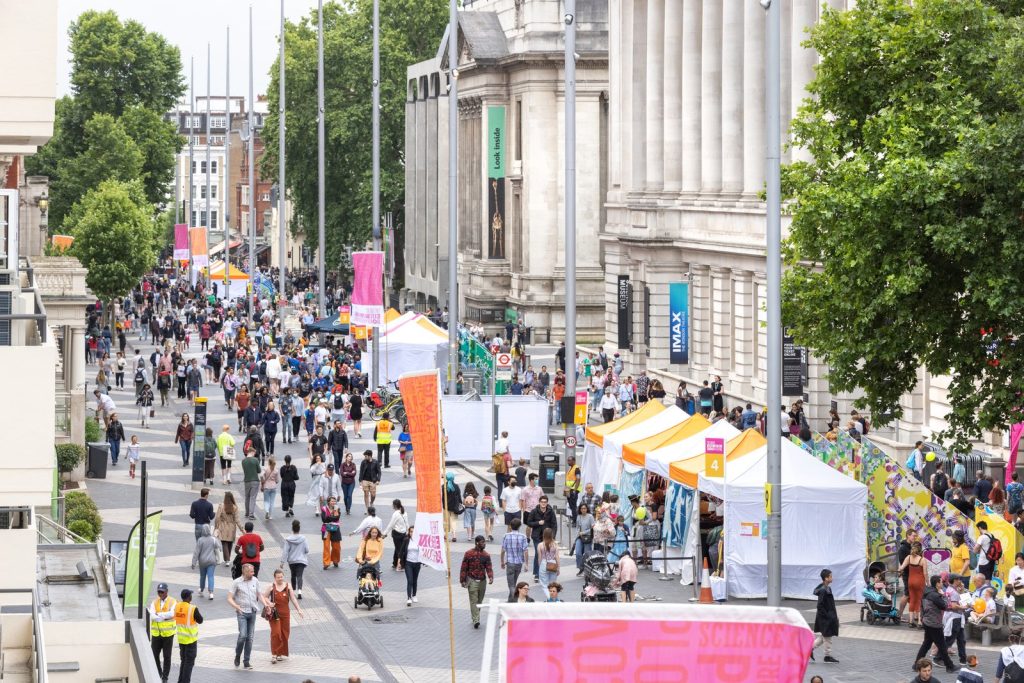Tsuktiben Jamir
The Great Exhibition Road Festival is held every summer in South Kensington, London, UK. It is a free festival honouring science and the arts. This year, it will take place on the 17th and 18th of June. It will feature a weekend of free scientific and arts events for people of all ages to celebrate the ability of awe and wonder to inspire us, inspire change, and stimulate creativity.
The Natural History Museum, Science Museum, V&A, Imperial College London, and other renowned museums, research institutions, and cultural organisations will provide interactive workshops, exciting talks, performances, and installations.
As part of the festival, Paint Lab will feature ten artists who have collaborated with some of the most outstanding scientists in the city, converting the festival space (west London Street) into a vast open-air painting studio. Paint Lab will be co-curated by Mark McClure and Jo Peel. Each artist is said to create 8 feet by 8 feet piece that will be placed along the busy street in west London. The artists and scientists nurtured their concepts through virtual Zoom meetings, engaging in discussions about their interests, passions, and areas of expertise.
Jojo Bedell, an artist and textile designer from East London, is one such artist who has collaborated with scientist Dr Andreas Kafizas to develop a ground-breaking kind of paint. They will use a special paint that contains titanium dioxide, which, when exposed to sunshine, can convert dangerous nitrogen oxide into less harmful gases.

Courtesy: Evening Standard.
Mark McClure, the co-curator, said, “The paint reacts with sunlight, and that triggers a reaction that allows it to absorb pollutants, so the potential for that is fascinating, and like everything in the exhibition, it is good fun and democratising the art itself and bringing science to people in a way that’s accessible.”
Chao Wu, an esteemed lecturer at the Department of Civil and Environmental Engineering, is joining the festival, organised by Imperial College. Wu has collaborated with artist Andy Macgregor to highlight a pressing issue: the projected decommissioning of approximately 5,200 wind turbine blades within the United Kingdom over the next five years. To bring attention to this matter, they have undertaken a unique approach by grinding down one of these blades and incorporating its remnants into the paint to be featured in the exhibition. This distinctive collaboration serves as a poignant reminder of the environmental challenges of renewable energy infrastructure.
Mark McClure said about this venture, “Wind turbines aren’t recycled at the moment, and they have a life span of about 25 years. They’re made up of fibreglass and resin composites, so there are a lot of plastics in there which are difficult to decompose, and the research behind this is to grind down the turbine blades and use the resulting powder as part of concrete which will go back into building the pads for more blades. Hence, it’s a circular recycling process, and Andy plans to use ground-down powder in the artwork to highlight that.”
Co-curator Jo Peel said, “We are excited to see what will happen as scientists step out of their labs and artists leave their studios, bringing their research and imaginations to the streets and creating new work before the Festival audience. Paint Lab is an immediate blending of art and science, with each partnership reflecting how diverse institutions are coming together to create the Festival.”





